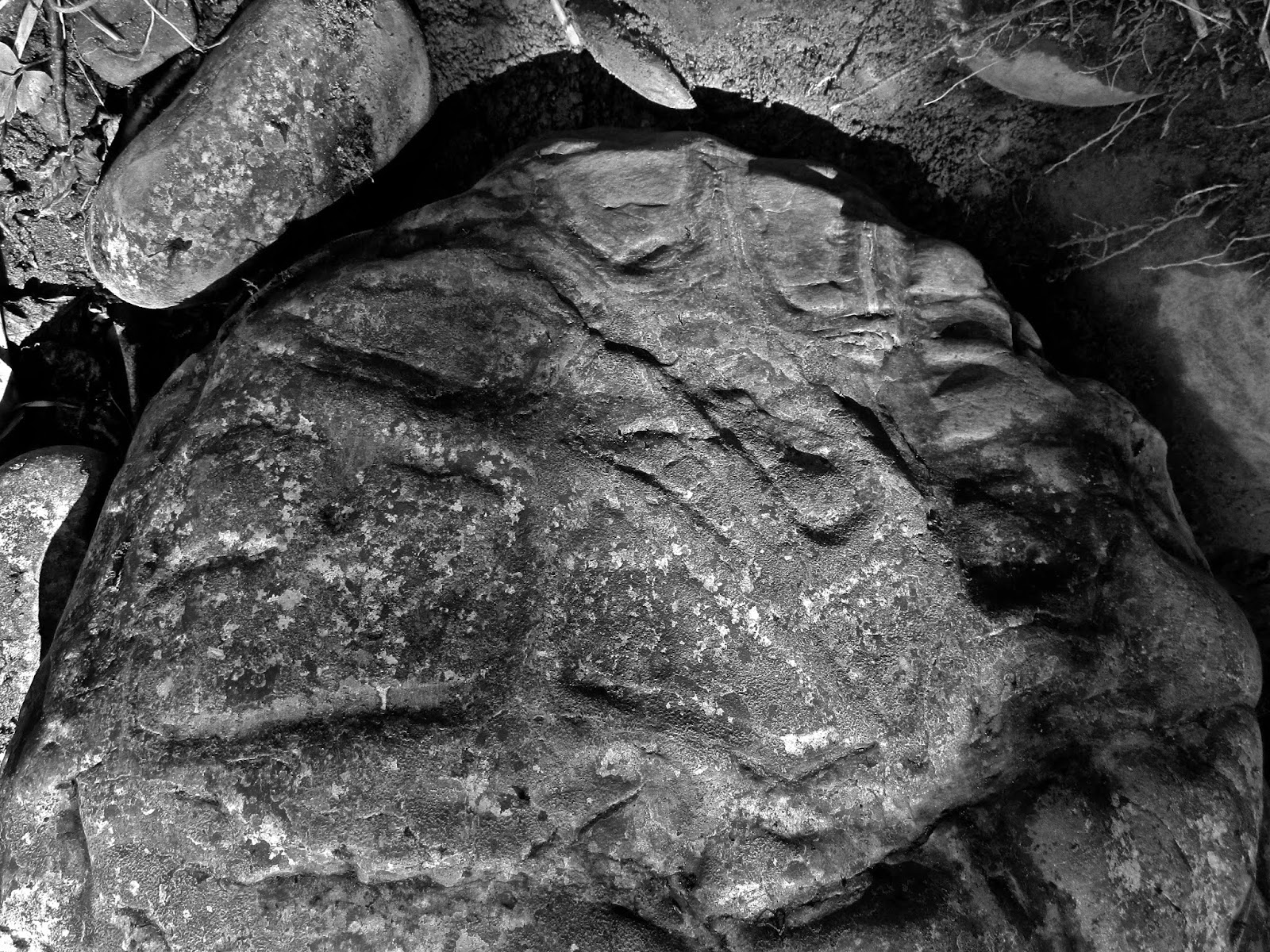Do archaeology long enough, and you'll fill your bucket with tales of people who come to you with Important Discoveries. Often as not, they have found some really significant Rock Art that may Change History. Often as not, the rock is virginally free of human touch, or has been violated by a bulldozer, its scars mistaken for petroglyphs.
On the other hand, it shouldn't take too many years of doing archaeology to recognize that people do make bona fide Discoveries. Like the guy who took his kid fishing, wasn't having much luck, and noticed what looked like carving on a boulder.
The fisherman contacted the Tribe of that River, as well as some archaeologists for the state. The river rose over the boulder, and fell again. The machinery of state moved slowly, then quickly. The Tribe and the archaeologists agreed that this was a singular boulder, carved with a depiction of K'wati the Transformer, slaying Xa?lax the Lizard. It turns out that the Quileute have an oral tradition about these two, and places their fight about 200 meters up-river from where the boulder was found.
Do archaeology for a very long time, and you see that rarely does Tribal history mesh so well, so specifically. Do archaeology for not very long at all and you'll already notice that there's rarely much Art in artifacts. Mostly, we look at rubbish and broken old tools. Sometimes they're well made, even masterly, but the Calawah boulder represents something more, an artistic vision that wraps through (at least) three dimensions and weaves carving onto a net of red veins in the stone, transforming them into Kwati's comb and tongue, and a cranky red lizard.
Do archaeology long enough, and you witness enough looting that it's inspiring to see a case like this where the guy who found it told the Tribe instead of taking it himself or selling it. Do archaeology long enough, and it gets easier to cynically write off your profession as the production of rarely read reports and unexamined artifacts locked in boxes, so it's good to be part of a discovery destined to be adored by a People.
Be an archaeocrat long enough, and you know that it can be hard to achieve consensus around doing the right thing (not just legally speaking) with different agencies and sovereign governments involved. But in this case a Plan was devised, a Council Resolution passed, and a Permit issued in the course of a couple of days. The boulder was pulled from the River and brought downstream to La Push, where it sits safe and sound, protected by the Quileute Nation. For the discovery, for the mere existence of this multi-dimensional work of art, and for all the right steps along the way, I am thankful.
On the dimension of gratefulness, the boulder resonates further. My colleague shown here retired recently, but got to document and protect this petroglyph as the final act of this long career. Years of recording can scatters, isolated chert flakes, and other near-meaningless junk--not to mention all those days of finding nothing--and he was rewarded with this. It may not sound as scientific as people want archaeologists to be, but I really feel like the land thanked him for decades of his care and work. If you do archaeology long enough, and do it for the good of the sites, your good karma bucket gets pretty full and things like this happen.











No comments:
Post a Comment